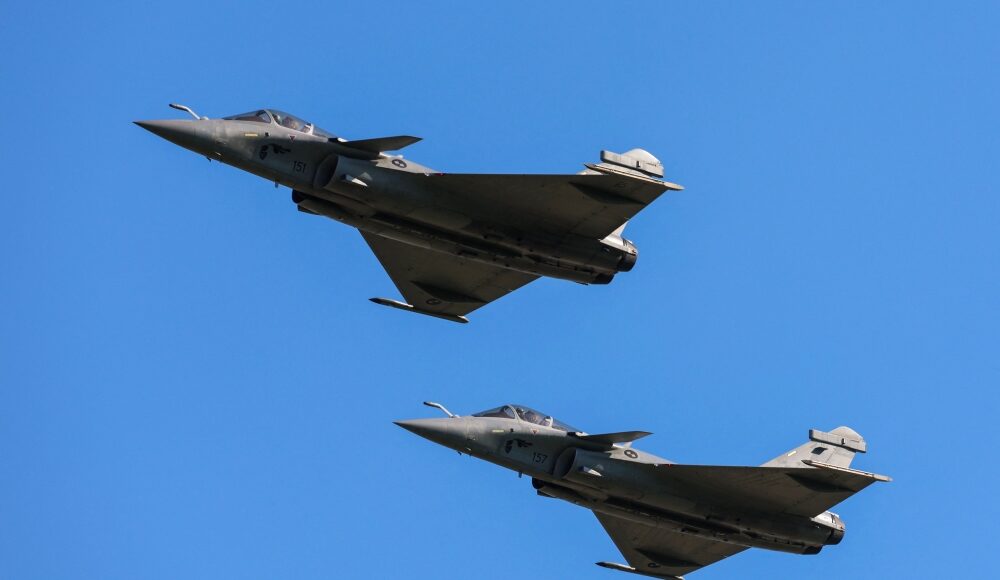MAY 12 — If the Rafale incident represents a symbolic tilt in aerial supremacy from West to East, the aftershocks are now being felt across the wider Indo-Pacific.
Nowhere is this more visible than in Japan and South Korea — two technologically advanced democracies seeking deeper economic and diplomatic engagement with Asean, while delicately recalibrating their own security postures amid rising great power competition.
Yet even as Tokyo and Seoul “Look East,” what they must now do is Think East. The fragile ceasefire between India and Pakistan offers a brief window to rethink their Asean strategy — not just for trade, but for regional peace and systemic resilience.
Both Japan and South Korea have long viewed Asean through the lens of economic pragmatism.
As the U.S.-China rivalry intensified, the ten-nation bloc represented a critical alternative: a consumer base, a manufacturing hub, and a neutral diplomatic bridge. Supply chain diversification, digital partnerships, and decarbonisation investments were the pillars of this forward momentum.
Yet what the South Asian conflict — and China’s quiet involvement in Pakistan’s aerial response — has made clear is that economic diplomacy can no longer be divorced from hard security realities.
The ceasefire between India and Pakistan is not a resolution but a breathing space, one that may be punctured again at any moment by political brinkmanship or doctrinal miscalculation. If renewed conflict erupts, it will not stay confined to the Himalayan front or the Line of Control. The ripple effects would spill across maritime trade routes, investment corridors, and summit diplomacy in Southeast Asia. For Japan and South Korea, who rely on Asean as a stabilising fulcrum in their Indo-Pacific outreach, ignoring the implications of South Asia’s volatility would be not just a strategic oversight — it would be a self-inflicted vulnerability.
Asean itself is at an inflection point. With maritime choke points such as the Malacca Strait, Sunda Strait, and South China Sea forming the arterial routes for Japan and Korea’s energy and commerce flows, any deterioration in regional security architecture could derail decades of economic planning. More importantly, Asean’s quiet dependence on stability has been upended by growing uncertainty in both East and South Asia.
While Asean has long practiced what might be called “tactical ambiguity,” this approach is increasingly misaligned with a world driven by real-time escalation and digitally fused defence systems. The region needs deeper security integration, early-warning networks, and shared intelligence platforms.
Japan and South Korea, with their advanced technological capabilities and political capital, can help build this infrastructure — not as outsiders, but as invested partners in the Indo-Pacific’s most fragile yet central zone.
However, engagement must go beyond capacity-building. A new approach must be grounded in strategic empathy.
Asean’s history of colonialism, Cold War entanglements, and inter-state neutrality cannot be dismissed. Japan and South Korea must understand Asean’s hesitation to pick sides, especially as China’s economic gravity continues to shape regional choices.
A pair of Croatian Rafale military aircraft fly past during the international aviation meeting AIRVG2025 at Franjo Tu?man Airport in Zagreb on May 10, 2025. — AFP pic
What is needed is a diplomatic sensibility that values Asean centrality, while nudging it toward multilateral resilience — especially in conflict prevention. Revitalising the East Asia Summit, expanding Asean Regional Forum mechanisms, and reinforcing the Asean Defense Ministers’ Meeting Plus (ADMM+) must become immediate priorities.
Furthermore, economic cooperation itself must evolve. Trade corridors are not just about tariffs and logistics — they are now geopolitical flashpoints. Smart ports, cyber-resilient logistics chains, and satellite-monitored maritime routes must define the next wave of Asean infrastructure.
Here, Japan’s expertise in maritime domain awareness and Korea’s edge in digital infrastructure can be harnessed toward a shared strategic goal: safeguarding the arteries of peace before the next conflict arrives.
Another dimension often ignored is South Korea and Japan’s role in managing their bilateral relations with both India and Pakistan.
Both countries have historic and growing ties with India, but strategic over-identification with New Delhi — especially if it leads to ignoring Islamabad’s own security anxieties — would deepen Pakistan’s dependency on China, making the regional equation even more brittle.
Triangular diplomacy that includes Asean stakeholders can foster a more balanced regional posture.
Education exchanges, joint climate initiatives, or even cyber diplomacy platforms may not make headlines, but they build the kind of long-term institutional trust that conventional arms deals never can.
In this moment of fragile calm, Japan and South Korea have a rare opportunity.
They can continue to engage Asean as a passive economic zone or help transform it into a stabilising buffer for an increasingly unstable Asia.
“Look East” was once a slogan. “Think East” must now be a strategy — one rooted in the understanding that peace, like airpower, is no longer about symbolic superiority, but about connectivity, resilience, and foresight.
The sky has tilted, yes — but what lies beneath it must now be reinforced. If Asean is to remain the keystone of the Indo-Pacific, it needs East Asia not only as a partner, but as an ally in peace-building. The next scramble for influence will not be over land or jets, but over who can ensure that the next ceasefire need not happen at all.
* Phar Kim Beng is a professor of Asean Studies in the International Islamic University Malaysia (IIUM)
** This is the personal opinion of the writer or publication and does not necessarily represent the views of Malay Mail.





